The trigger is usually a neglected item on a gun.
Most people don’t really think about it until they comes across a bad one and a bad trigger can completely ruin a gun’s feel.
At the same time, a spectacular trigger will be mentioned on occasion but beyond that it’s only thought of as a comparison for other guns.
In my opinion, volumes and volumes could be written on the trigger alone…and they will be. For right now, I’m going to talk about the three most important things about triggers:
- Trigger discipline
- Trigger control
- Trigger Pull
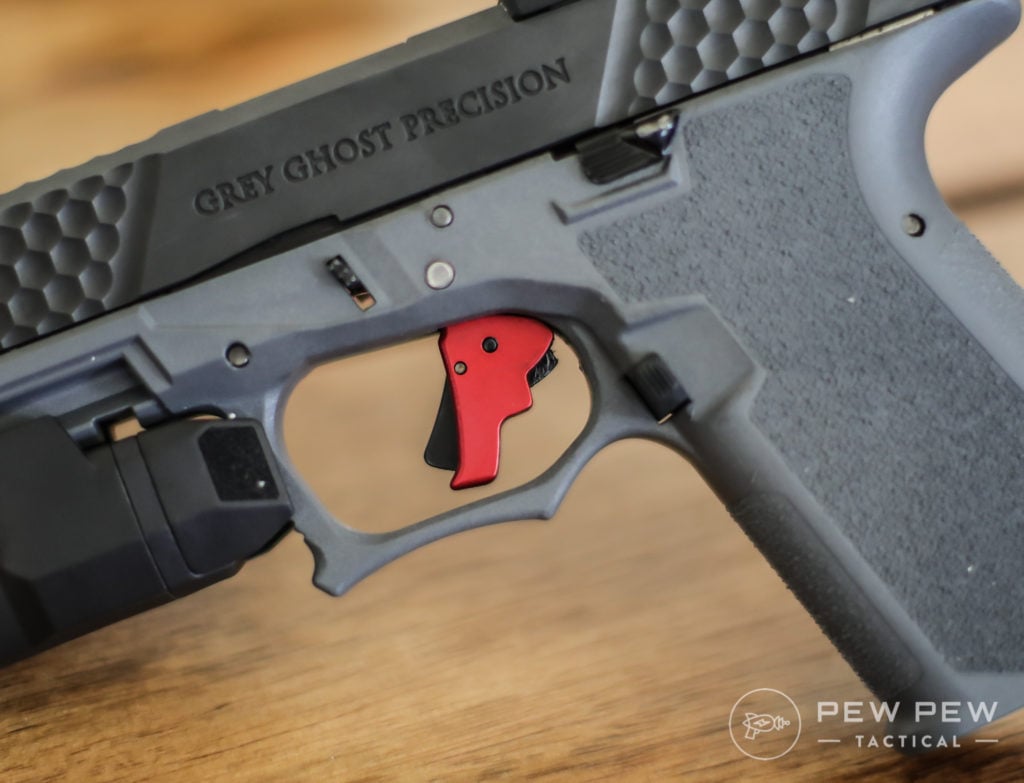
One of those is about the safety of yourself and others. The other two are about skill. Let’s get safety out of the way first.
Table of Contents
Loading…
Trigger Discipline
Good trigger discipline can eliminate a large portion of those “I accidentally shot myself in the leg” stories you read about.
It all boils down to one thing…keeping your finger off that little curved thingy until your ready to put a hole in something.
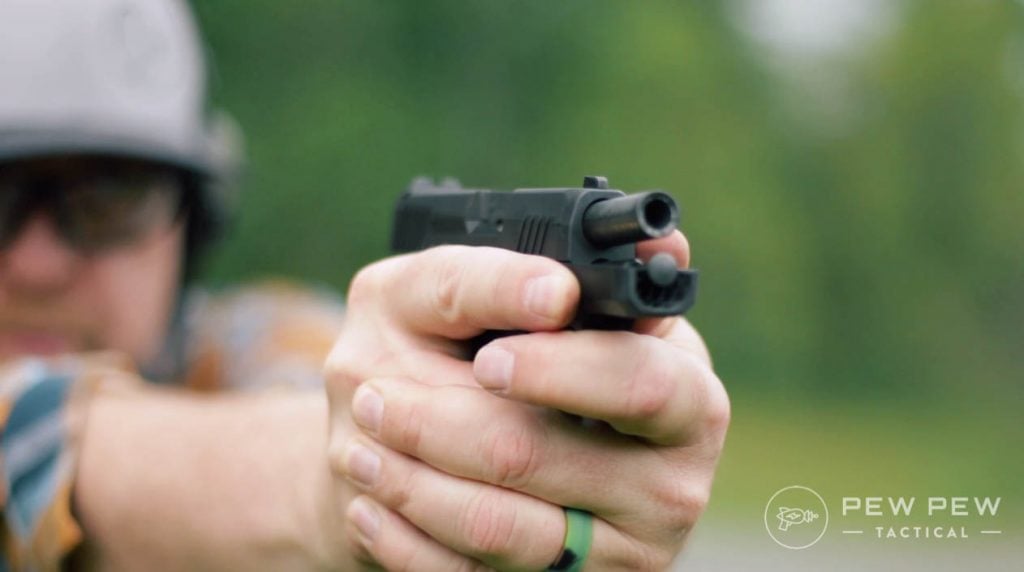
This needs to be something beyond a conscious effort. This needs to be practiced and driven home until it becomes a natural reflex no matter what gun you pick up, even if it’s one of those arcade games.
You want to do it so often that it is permanently committed to muscle memory.
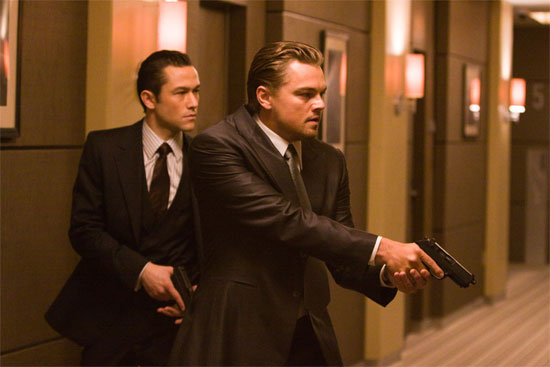
The easiest way, and this is the way taught by military, police, NRA and more, is to keep your finger extended and resting up on the slide or cylinder. By keeping your index finger there, you are making it near impossible to accidentally manipulate the trigger.
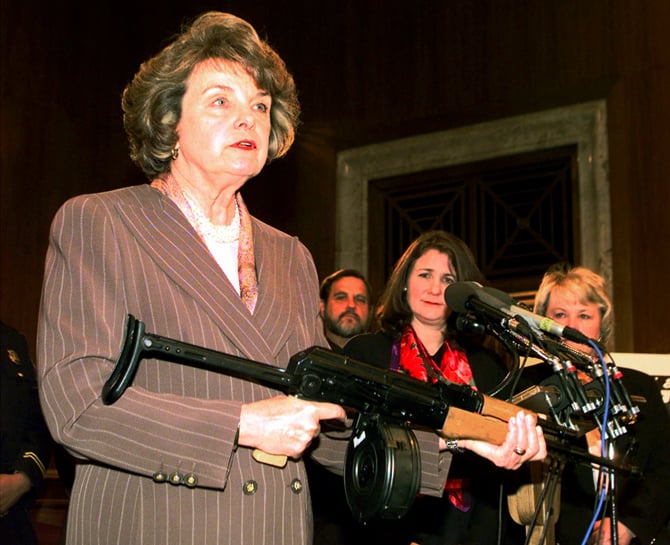
Trigger Pull & Follow Through
In a perfect world, you would have a rock-solid grip and ignite the gunpowder by just thinking. But of course, we have to deal with mechanical inputs and human reactions.
As a beginner shooter, you know there’s going to be a loud bang with some recoil. So you will likely press the trigger fast to get everything over with, which adds some movement to the gun and barrel.
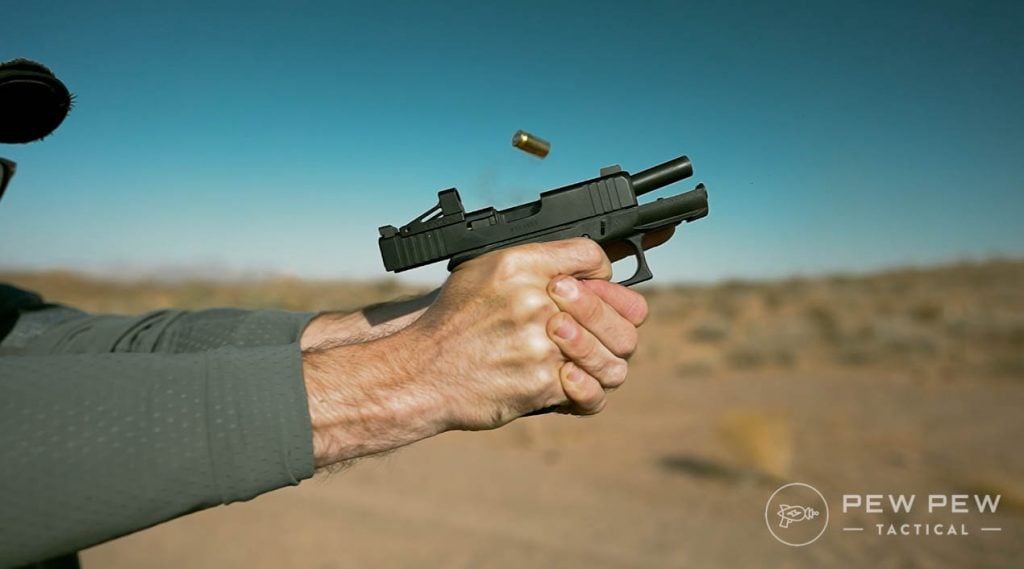
The bullet still takes some time to move down the barrel, and if the gun/barrel moves, your bullet will be off-target. So the trick is to cause as little movement to the gun as possible when you are pressing the trigger.
- Use the middle of the first index finger pad
- Remove the initial slack or “pre-travel” in the trigger
- Slowly squeeze the trigger towards the back of the gun
- “Follow through” by not immediately letting go of the trigger
- “Reset” the trigger by easing it forward just enough to hear a *click*
- Slowly squeeze for the next shot
For more on proper follow through (and good recoil management), check out the Daily Defense video from Brownells below.
Trigger Pull Stages
Now, when it comes to actually pulling the trigger, that’s a whole other can of worms. Every time you pull the trigger, there’s 4 distinct points:
- The Initial Slack – this is a no man’s land of movement between where the trigger rests normally and where it breaks.
- The Trigger Break – this is where the gun actually fires.
- The Stop – After the gun has fired, this is where the trigger stops moving. Most times the stop and the break are the same point. Some guns it’s not.
- The Reset – This is the point where, upon releasing the trigger, the gun is ready to fire again.
During the course of those four points, there about three and a half things that can go wrong with a trigger pull that will negatively affect your accuracy.
One of the best ways to work on a good pull is with Dry Fire Practice.
This means pulling the trigger without having any ammo in the gun.
If you’re going to be doing this extensively, I would highly highly recommend investing in some snap caps. These are dummy bullets with padding on the back that will keep your firing pin from over-extending itself.
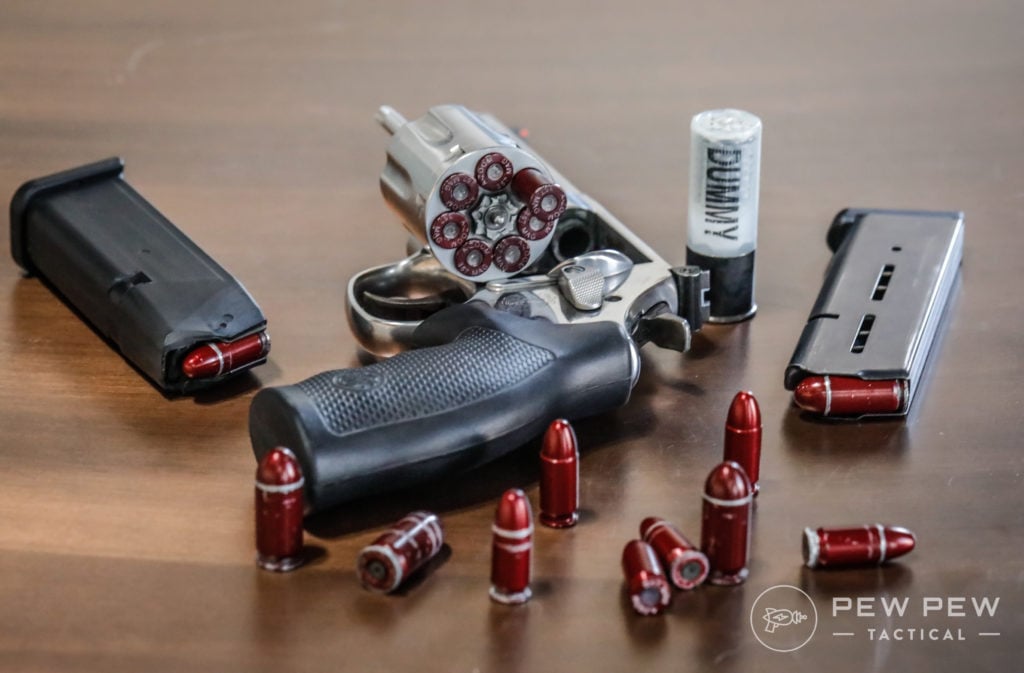
Pro Tip: Some guns, namely striker-fired guns, require that the slide be cycled after every trigger pull. When doing dry fire practice, you don’t need to pull the slide back to the point that the dummy round is ejected in order to reset the striker.
Spend some time with your gun to figure out where the reset is and you’ll save yourself a lot of time chasing ejected dummy rounds around your room when you’re practicing.
I find with my Glock that it takes about 1/4 of an inch to reset the striker.
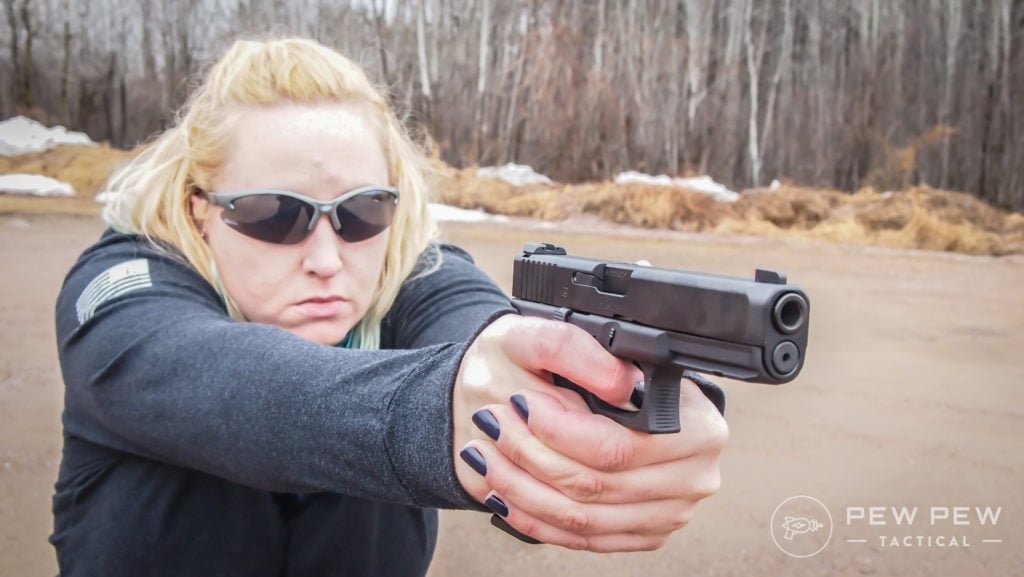
Need a drill to really work on reset and trigger control? Check out the Brownells Daily Defense video below.
Fix Your Trigger Pull
Anyway, back to the 3.5 things that can go wrong with your trigger pull…
Number 1: First and foremost is jerking the trigger.
You don’t want to just yank it all the way back as hard as you can. You want to squeeze it smoothly and consistently every time.
When I say “squeeze” I literally mean squeeze it like you’re trying to slowly squish one of those rubber stress balls between your thumb and index finger.
You can speed it up later but for right now you need to focus on keeping it smooth from start to stop.
Also, don’t just stop the trigger pull when you hit the point where it fires (also called “the break”). You want to keep pulling that trigger until the trigger itself stops then release the trigger to the reset point.
If you find that you are consistently shooting to the left of the target (or to the right if you’re shooting left handed), and you have verified that your sights are fine, then it’s almost certain that you’re jerking the trigger.
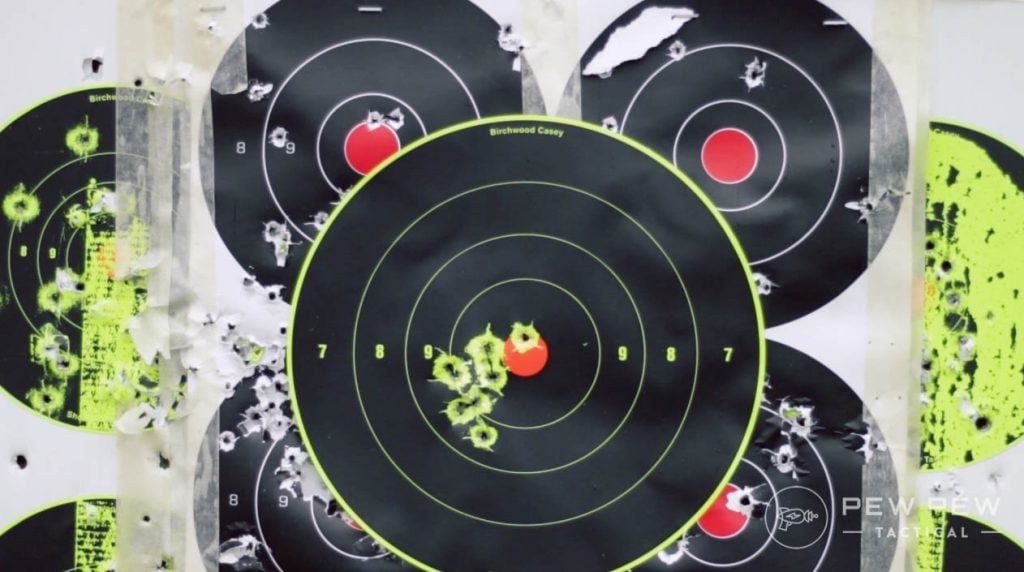
Number 2: Anticipation of the recoil/gun shot.
If your shots are going all over the target, you might just be anticipating the recoil.
There’s a very easy way to diagnose this one: load some of your dummy rounds randomly into your magazine along with live rounds at the range.
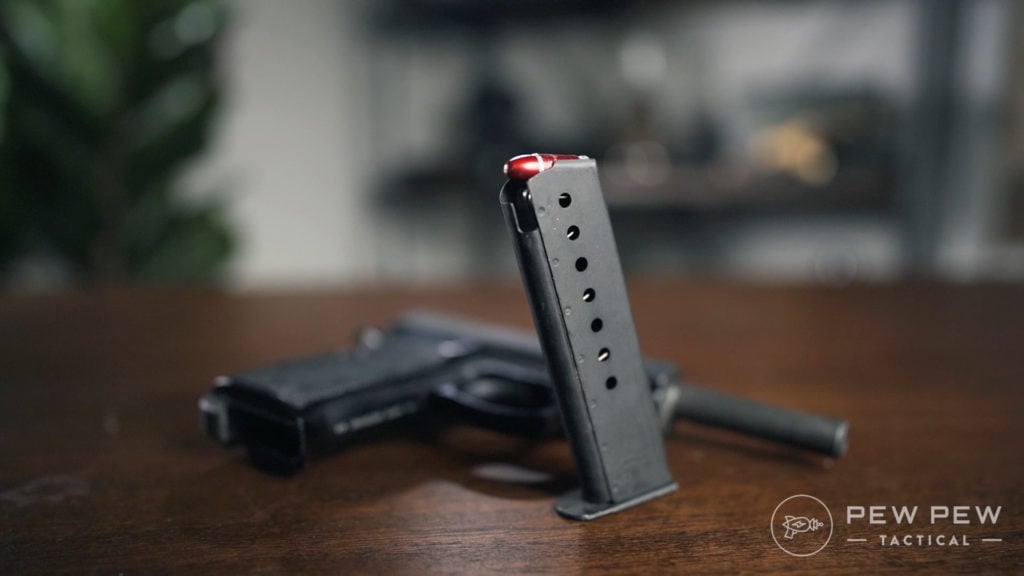
Load a couple of mags this way then mix the mags up. What you’re trying to do is make it so that you have no idea if the next round is going to fire or not.
When the gun doesn’t go boom, if your gun still twitches like you shot a round then you’re anticipating/flinching. This is a not-so-easy fix. What you have to do is seriously slow down your trigger pull for a while.
Expanding on Problem 1: you want the squeeze to be so smooth and slow that the firing of the gun literally surprises you (at least at first). The only way to fix this is to reset your muscle memory on just a consistent squeeze and that’s only going to happen by slowing it down and pulling the trigger a bunch of times. You have to unlearn then learn again.
I’ve been through it myself and it’s a pain but in the end you’ll be glad you did.
Number 3: The last major thing is “follow through.”
As I mentioned before, there will be a definite part where the trigger breaks. In many cases, this isn’t always where the trigger will stop moving backward.
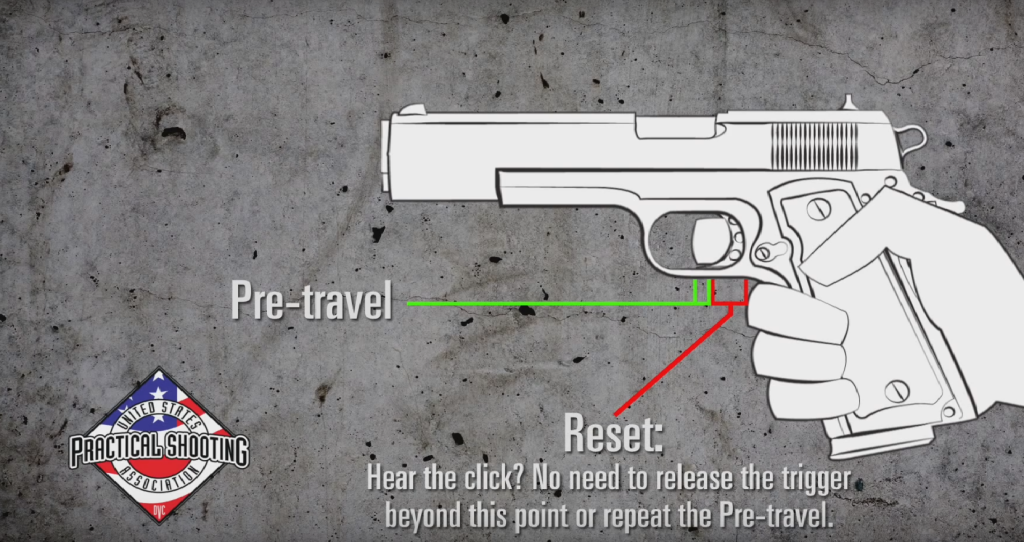
In many it is the case.
Regardless, you should never stop as soon as the break happens. If the break doesn’t coincide with the stop then continue to the stop. Regardless of where the break/stop is on your gun, you should then release just to the point of reset then start your squeeze all over again.
The reset point is different on every gun and it’s rarely the point where the trigger rests when your finger isn’t on it.
On a Glock, for example, it’s at almost the same place where the trigger breaks.
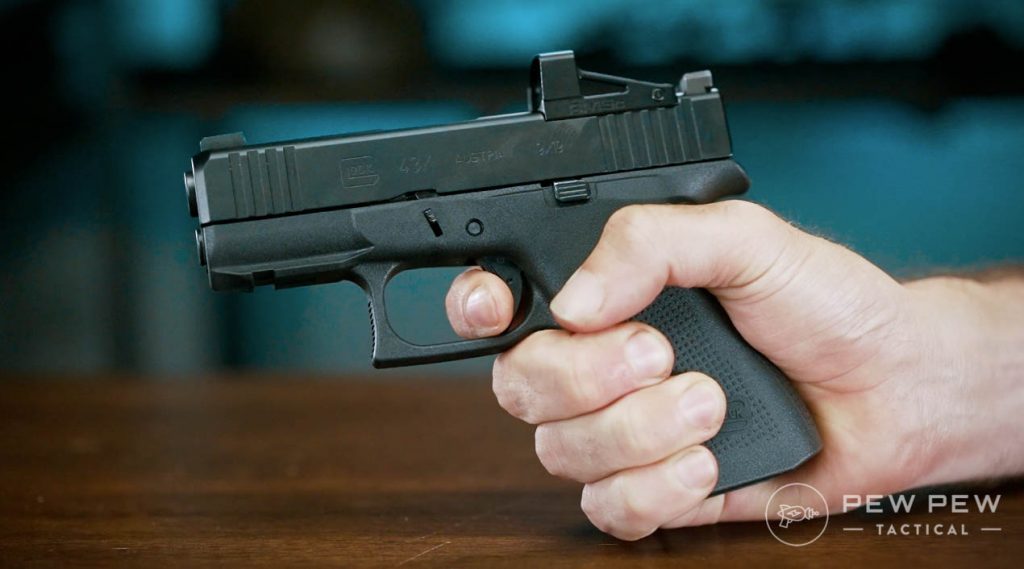
Number 3.5: Pad of your finger on the trigger.
I didn’t classify this one as a full blown issue because it’s rather inconsistent about causing problems for people. A lot of people tend to wrap the indentation of their first knuckle around the trigger.
Scholars, instructors and pros will tell you that you should use the pad instead of the knuckle.
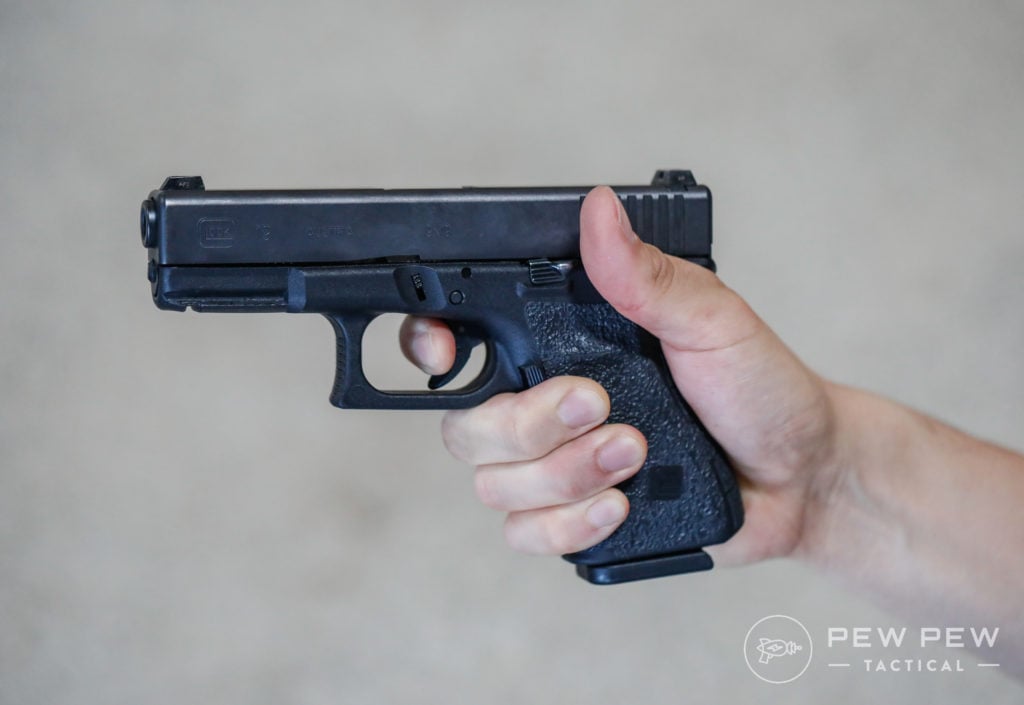
Personally, I noticed an improvement in my shooting when I started using my finger pad but I also happen to know of some amazing shooters that have always used their knuckle and hate using the pad. This one boils down to “it depends on the person”.
Anyone could learn to ride a bike by sitting on it upside down while peddle it with their hands and steering with their feet.
Doesn’t mean it’s the best or worst way to do it.
It just means that’s how you learned to ride a bike.
If you can honestly say that you’re not doing problem 1, 2, or 3 and you’re still having problems, then double-check your sights and double-check what part of your finger you’re using.
To get a better idea of how to smooth out your trigger press for those on-target shots, check out the Brownells Daily Defense video with Jeff Gonzales below!
Conclusion
In the end, dry fire practice is a great way to get your trigger pull down without spending a lot of cash on bullets and range time. It is not, however, a substitute for range time.
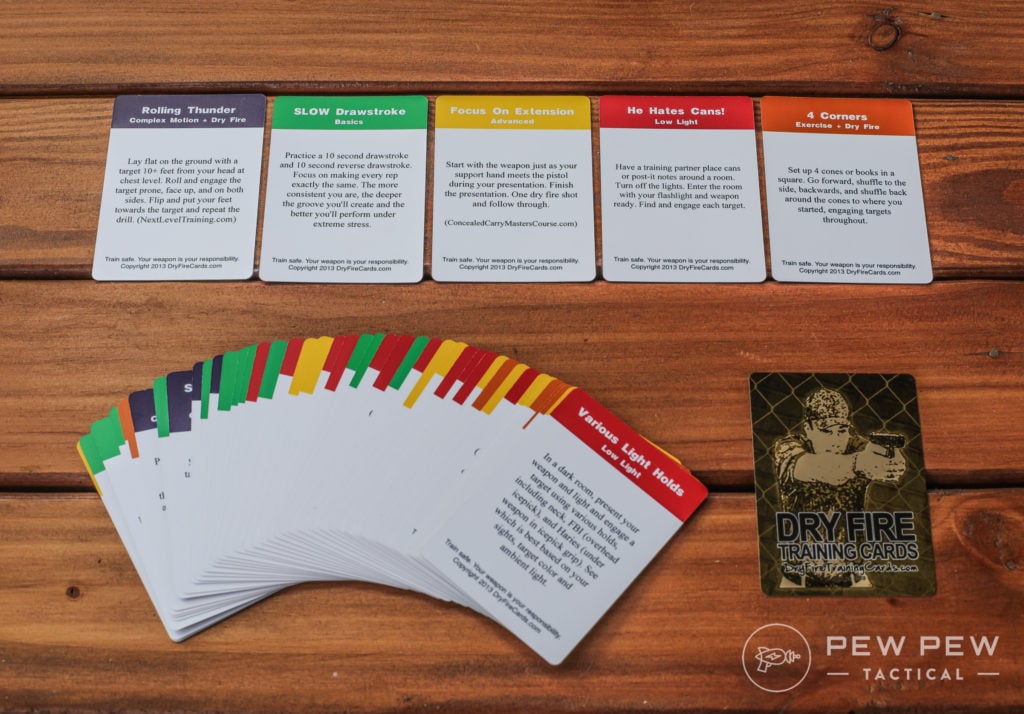
You still need live fire to learn how to compensate for recoil and to see if your dry fire practice is paying off.
Keep it slow, keep it smooth and follow through every time.
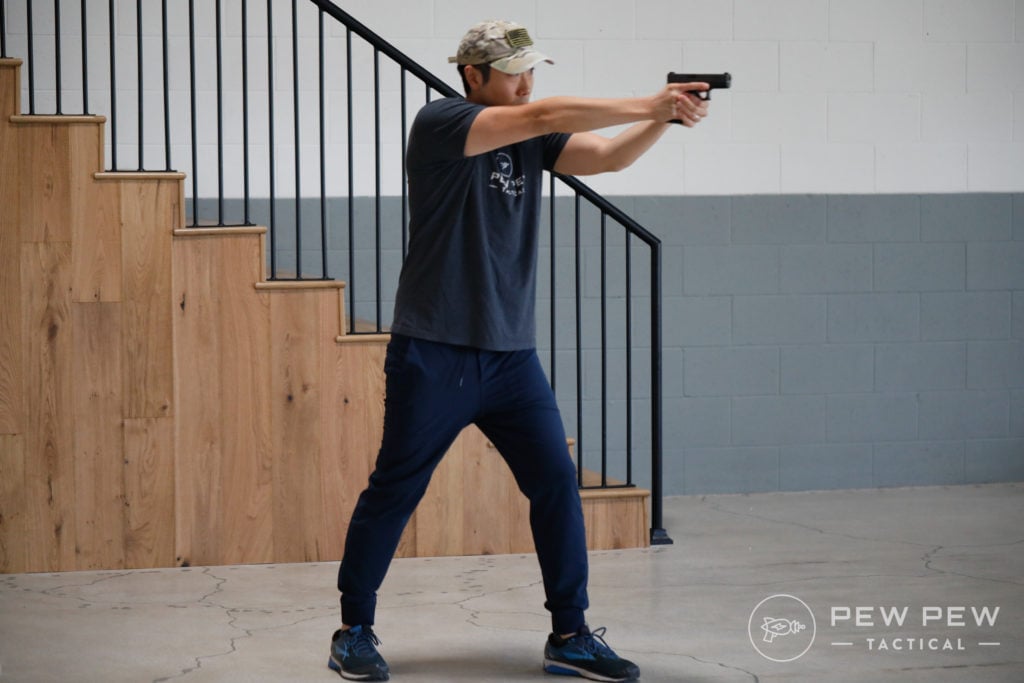
Still struggling with your trigger pull? Check out the Daily Defense video below for more tips on how to correct trigger pull errors.
Or try a range drill from Brownells Daily Defense to perfect that pull!
Have you struggled with your own trigger pull? Tell us about it in the comments below. Also, check out our sister guide How to Accurately Shoot a Pistol for tips on stance, grip, sight picture, dry-firing exercises, and gizmos.

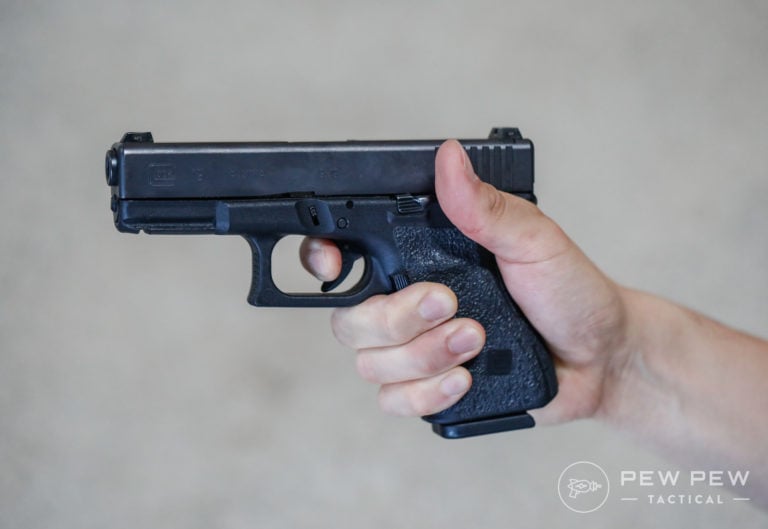




18 Leave a Reply
Thanks great practice tips....helps alot! Can you tell me what holster Jeff Gonzales is using...it looks like what I have been looking for in an OWB. Thanks very much!
Having a gun that fits your hand is also an important aspect of good trigger technique. I have small hands with relatively short fingers (No they don't smell like cabbage). I tend to shoot better with slimmer gripped (usually single stack) guns. If I have to reach with my trigger finger, it affects my accuracy.
"...keeping your finger off that little curved thingy until your ready to put a hole in something."
Until you're ready
I discovered it takes some very specific muscles to hold the gun properly, especially for a couple hundred rounds of live fire. Not that we can afford that any longer. Adding a 1lb wrist weight for dry fire practice made a bit difference for me.
"Johnny’s hand" - third picture down in the article. The grip is wrong, I've seen people do it but its still not right. I cringe when I see people learn to shoot with a grip like that. To each their own I guess.
what's your issue with that grip? thumb out along the left side of the frame is generally recommended as best practice these days to maximize surface area contact with the gun and increase control
Its not the thumb. The finger on front of trigger guard and support hand covering the other hand should be lower.
Yes, having a quality trigger really helps you shoot well. Learn and apply these basics will definitely help even with the not so great triggers. But just like anything else, if you don't practice you won't hit your target (accurately that is)
depending how good of a trigger you have makes it so much easier definitely emphasizing the trigger control being directly connectly to accuracy, my m&p2.0 trigger breaks so clean its almost idiot proof with 10 minutes of instruction, but a gun like my Taurus pt111 g2 with a terrible DA/SA trigger that breaks and stops all the way at the back of the trigger guard making the initial slack literally 95% of the trigger pull is TERRIBLE if you don't know the "correct" way to squeeze a trigger let alone the subtle nuances of the pt111 trigger.. So choice of firearms is important as well. if you're a beginner get a nice modern firearm with a good trigger first and foremost, the 15 pound trigger pull carry and conceal self defense models are terrible to practice with initially.
I have limited firearm experience, but I did notice something, though it may be specific to the Marlin .22 rifle I was using (it had been modified to fire tranquilizer darts with a cut down barrel feeding into a .50 cal barrel where the dart was loaded, the rifle used power charges) Regarding the trigger pull stages; with the Marlin, there was a noticeable point between the initial slack, and trigger break, almost as if there was a slight increase in tension needed to get to the next stage.
I found I could hold there and do some micro adjustments to my aim, then go that last little bit, which would discharge the "dart projector" (pr term we had to use).
As I mentioned, I do not know if this is specific to the rifle I was using, or if this is something that appears in other firearms. It was handy for any last moment adjustments that needed to be made. At $20+ a dart, and that this was catch and release deer hunting, one really had an incentive to make each shot count.
If it shows up on other firearms, it may help other folks out. Something to look for regardless.
Thanks Rilee, seems like you became one with your trigger!
Mostly just curious to see if this held true with other firearms, I haven't handled enough different pieces to know myself.
It should translate to most firearms.
Hi Riley, as Eric says, this would apply to most modern, well-made semi-automatic pistols. After your trigger “breaks”, follow through with your trigger pull until the trigger stops. Then ease the trigger slowly forward until the trigger “resets” for the next shot. You’ll be able to feel, and sometimes hear, when the reset occurs, and this will be that “next stage” point you described feeling with your rifle, where you can hold the trigger at that position and make micro adjustments to your aim. When you’re ready to fire, just squeeze the trigger the last tiny bit past the “break point” to fire the shot. Repeat the above process to reset the trigger for your next shot.
Best,
Tim-o
One minor point regarding your instructions on Number 2: 'Anticipation of Recoil' ... you had just recommended putting snap caps in for dry fire at home, then went on to suggest mixing snap caps and live ammo without specifying AT THE RANGE! I am a pretty seasoned shooter and was a bit confused when I first read it. Although it seems obvious what you meant, it is such an important point that I would clarify it to new shooters.
Very good point, Alan! Fixing it now.
All very good points, BUT the one thing that I see destroy accuracy on the range more than anything else is the inability to operate the trigger finger independently from the other fingers.
Right-handed shooters who consistently hit to the left of their point of aim are usually not jerking the trigger and their sights aren't in need of adjustment. They are squeezing their whole hand along with their trigger finger and it pulls the barrel to the left (for a right handed shooter).
Guns with lighter triggers can mask this, as the shot breaks before the pistol gets too far off target.
You can see the exaggerated effect yourself by pointing an empty pistol down range and, with trigger finger indexed, apply pressure to the grip with the other three fingers. Watch the front sight move to the side. It doesn't take much movement at the gun to throw the shot off by several inches at 25 yards.
Learn to operate your trigger finger independently of the others, and your shooting will improve.
Agree, And I think it is also depend on how you grip a pistol. Me and my wife shoots on right, but never on the left.